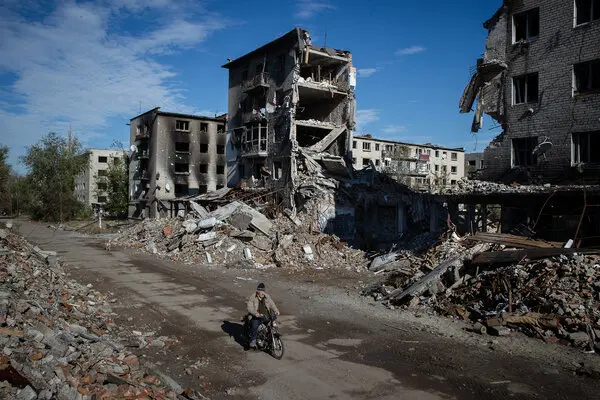
SpaceX Starship 36 static fire test explodes
SpaceX Starship 36 Static Fire Test Ends in Explosion A Setback in Bold Mars Ambitions
In a dramatic and unexpected turn of events, SpaceX’s 36th Starship prototype experienced a catastrophic failure during a scheduled static fire test at the company’s Starbase facility in Boca Chica, Texas. The event, which occurred during a routine pre launch engine firing on the test pad, resulted in a fiery explosion that engulfed the base of the vehicle, sending debris and flames into the air and drawing immediate attention from space enthusiasts, industry experts, and regulators alike. While no personnel were injured in the explosion, the incident has raised significant questions about the readiness of the Starship program, the pace at which SpaceX is pushing its prototypes, and the implications for upcoming orbital launches.
The static fire test was intended to validate the integrated performance of the Raptor engines installed on Starship 36. These brief, high thrust tests are a crucial part of the company’s iterative development approach, used to ensure systems are functioning nominally before committing to full scale flight. According to initial reports from SpaceX and external observers, ignition was initiated as planned, but seconds into the burn, an abnormal vibration followed by a rapid detonation occurred at the aft of the vehicle. This sequence suggests a failure related to engine plumbing, structural integrity, or a volatile reaction in the fuel systems although the exact cause remains under investigation.
Video footage captured by on site observers and livestreamers showed an intense fireball erupting from the base of the vehicle, followed by loud booms and a thick plume of smoke. The launch mount, surrounding infrastructure, and test systems appear to have sustained damage, although not at the scale seen in earlier test failures in 2020 and 2021. Starship 36 itself was quickly consumed in the blaze, with melted panels and engine components visible in the aftermath. Emergency response teams were deployed immediately, and SpaceX’s ground crew quickly secured the area. Engineers and safety teams began assessing the structural and environmental damage within hours of the incident.
This latest failure is not without precedent. SpaceX has adopted a famously aggressive development philosophy known as “test, fail, learn, repeat.” Under this model, failures are considered integral to progress, particularly in the case of a program as ambitious and untested as Starship, which aims to revolutionize space travel by enabling fully reusable rockets capable of reaching the Moon, Mars, and beyond. Previous iterations of the Starship prototype such as SN1 through SN15 have experienced a variety of explosions, hard landings, and unplanned disassemblies during both ground and flight tests. Many of those setbacks ultimately led to design refinements that improved engine reliability, tank pressurization systems, and flight control algorithms.
However, the explosion of Starship 36 carries added weight due to the stage of the program and the expectations placed upon it. Unlike earlier test vehicles focused on short hops and landing techniques, the Starship 30 series prototypes are part of the orbital flight test regime intended to validate the full stack’s readiness for long duration space missions. Starship 36 was expected to follow closely behind the recently completed test flight of Starship 35, which reached near orbital altitude but faced issues with reentry heating and booster recovery. As such, the destruction of Starship 36 is not merely a prototype loss it represents a delay in the broader roadmap toward orbital certification and eventual crewed missions.
The incident also comes at a time when SpaceX is under increasing pressure from NASA and other commercial clients to meet ambitious timelines. NASA has tapped Starship as the Human Landing System (HLS) for its Artemis III mission, which aims to return humans to the Moon as early as 2026. Delays in achieving consistent and safe launches from Earth orbit could jeopardize downstream mission milestones, including lunar cargo delivery and crewed landings. Furthermore, the FAA (Federal Aviation Administration), which oversees launch safety and environmental compliance, is likely to scrutinize the failure closely, potentially tightening restrictions on future tests until a root cause analysis is complete and corrective actions are implemented.
Elon Musk, CEO of SpaceX, responded to the incident via X (formerly Twitter), calling it “a valuable data point” and affirming the team’s commitment to pushing forward. Musk reiterated that failure is part of innovation and emphasized the importance of learning from anomalies. Internal sources suggest that engineers had anticipated some risk with Starship 36’s engine configuration, which included several recently modified Raptor engines undergoing validation. if the explosion was tied to these new components remains a subject of speculation, but it highlights the delicate balance between innovation speed and reliability in next generation rocketry.
Public reaction has been mixed. Supporters of SpaceX applaud the company’s transparency and willingness to accept setbacks as part of the development process. They point to the rapid progress made since Starship’s inception and argue that failures like this one are preferable on the ground, rather than during crewed missions. Critics, on the other hand, argue that such incidents reflect a culture of excessive risk and insufficient testing controls, especially when taxpayer funding and government partnerships are involved. Environmental activists have also renewed concerns about repeated explosions at Starbase, which sits near protected wetlands and migratory bird habitats.
In the days following the explosion, cleanup efforts began in earnest. SpaceX’s engineers are expected to salvage undamaged components, analyze telemetry, and perform detailed inspections of the Raptor engines and fueling systems. Starship 37, already under assembly in the high bay, may now be fast tracked to resume testing once the site is cleared and deemed safe. Simultaneously, the company is likely to revise its static fire protocols, possibly introducing additional redundancies and pressure monitoring systems to prevent recurrence. if these changes will significantly alter the testing timeline remains to be seen, but delays of several weeks or even months are possible, depending on regulatory review.
In conclusion, the explosion of SpaceX’s Starship 36 during a static fire test is a sobering reminder of the volatility and complexity inherent in building next generation launch systems. While the incident represents a setback, it also exemplifies SpaceX’s iterative philosophy and unyielding ambition to transform space exploration. As investigations continue and corrective measures are implemented, the aerospace world will watch closely to see how SpaceX navigates this latest challenge. If history is any guide, the ashes of Starship 36 will likely become the foundation for future breakthroughs, reinforcing a central truth of spaceflight innovation failure is not the end it’s part of the journey.











